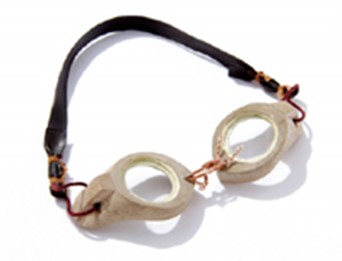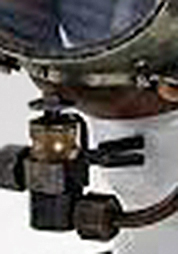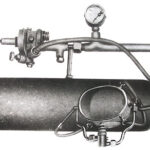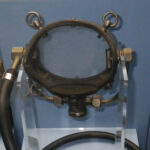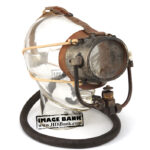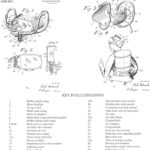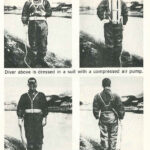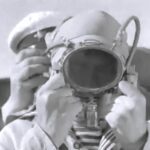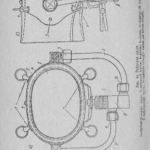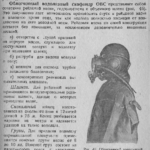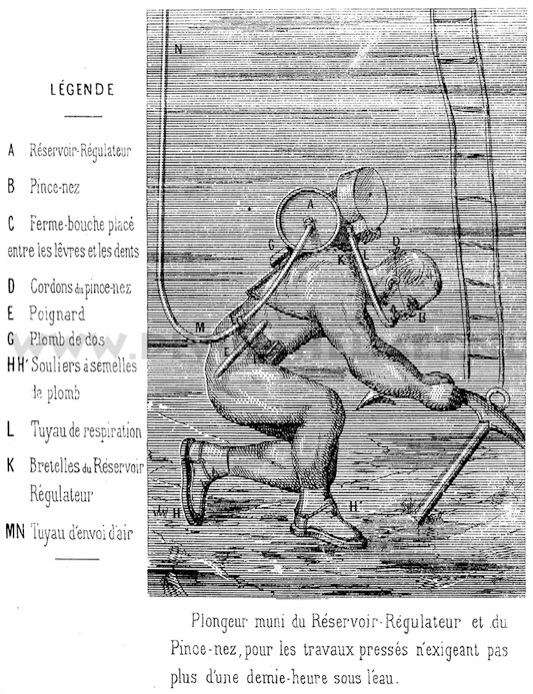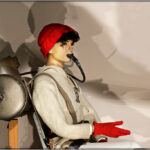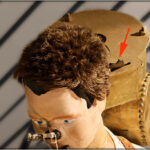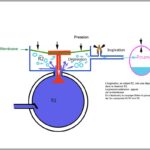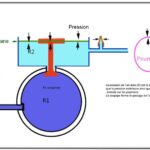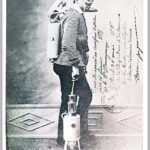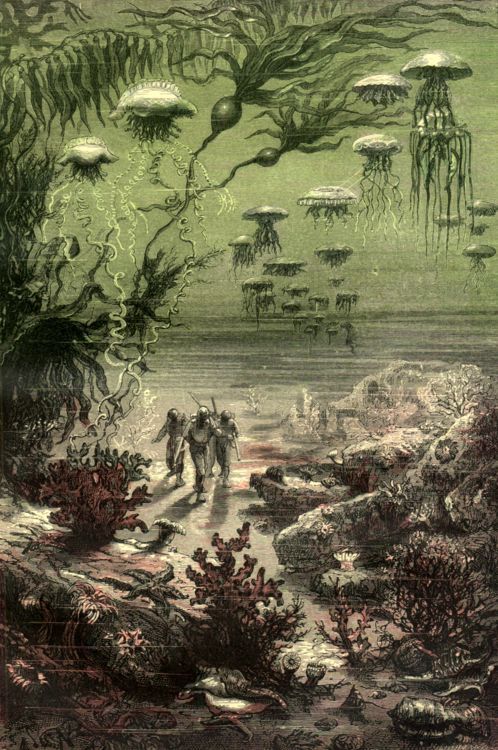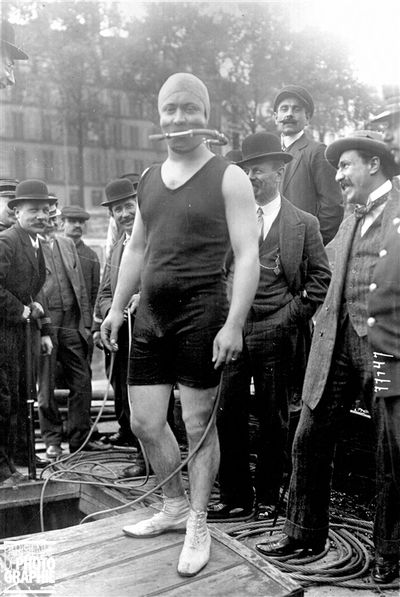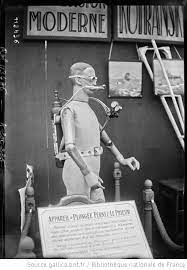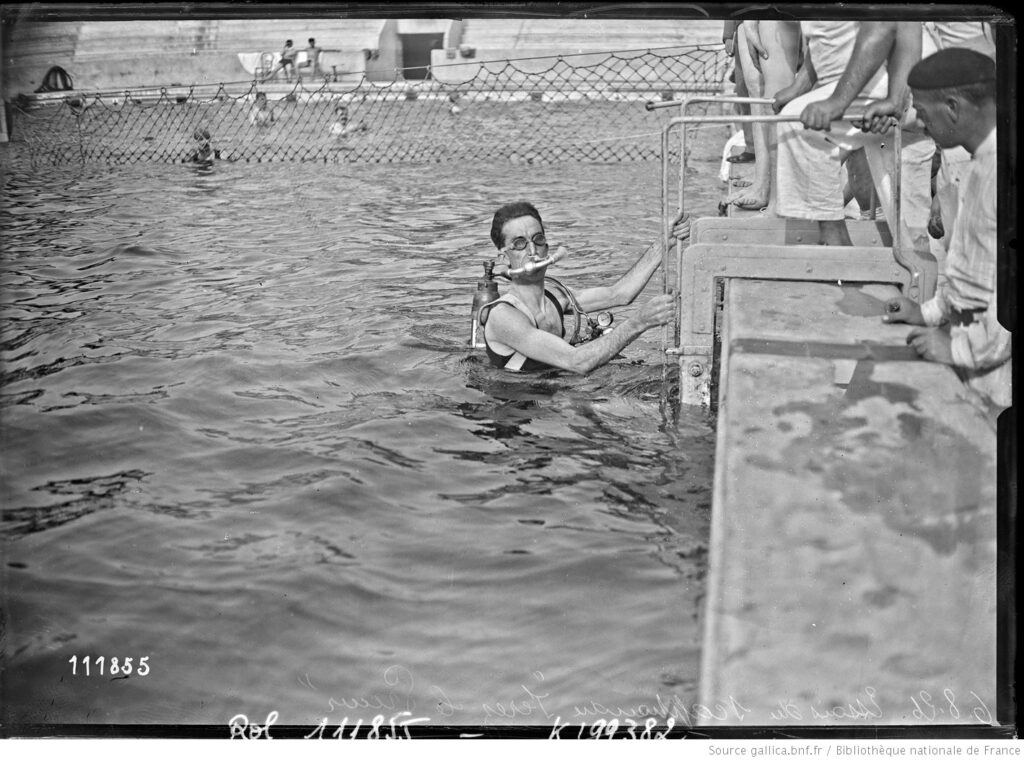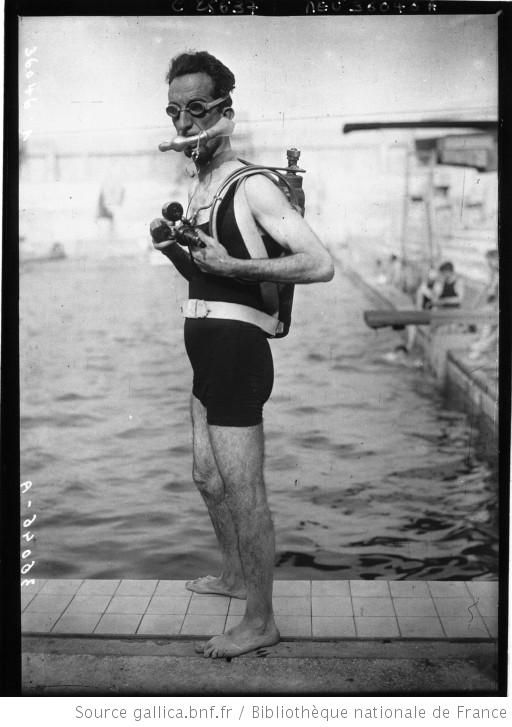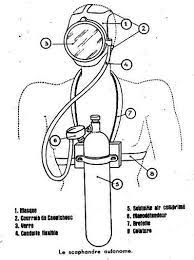Culture
Elements of Japanese Diving History
Modern diving
Beyond its traditional freediving culture, an island-nation like Japan was naturally interested in the potential of recent technological developments for underwater activities, allowing more efficient seafood and pearl collection, ship repairs and also salvage missions.
The 19th century was one of great inventions, and of the first standardisation of hard-hat heavy diving equipment.
Despite the (relative) isolation imposed by the Shogunal authorities until the mid-19th century, Japanese industrialists and the military were well aware of recent technological developments, and the government started importing diving equipment as soon as 1857 (the sakoku isolation policy gradually edored after 1853) – the first officially recorded use of hard-hat diving equipment was in 1866, by Mankichi Ueda, to repair an English ship.
The Japanese Imperial Navy also ordered and used the Rouquayrol and Denayrouze underwater breathing apparatus, which was first commercialised in 1865, as did other navies worldwide.
As lightweight device, with its highly recogniseable snout half-mask, it was one of diving’s first commercial success.
It was also, highly innovative, being a demand membrane regulator system, that could be used as a self-contained unit.
After the Meiji Restoration of 1868, hard-hat devices started being imported on a private basis –
Mankichi Ueda, imported 10 English-made hard-hat diving kits for commercial use in 1872, for example.
It was not long before some hard-hat diving derived kits were manufactured in Japan as well, especially after 1877, when abalone culture took off across the country and increased the demand.

Image source: The_Journal_of_Diving_History_86_2016

← Japanese-made Kimura diving helmets ↑
Most Japanese bonnets models were based on Siebe design, and handmade, well into the mid-20th century…
The other major impulse boosting demand for diving equipment and divers was the Japanese involvement in the development of artificial pearl culture, a primarily Japanese invention.
Cultured pearls and pearl farming techniques were developed in Kansai in the late 19th century, along with the establishment of large aquaculture farms in western Japan, such as Toba’s Mikomoto Pearl Island.
Japan helped develop the cultured pearl industry, and exported its know-how, and divers.
By the 1920, the majority of divers working in pearling were Japanese.
On the right, a Japanese hard-hat pearl diver, who as working on Thursday Island, in the Torres Strait (Queensland, Australia).
Japanese pearl / abalone diver, 1905
Image source: wikipedia
Pearl cultivation requires introducing an irritant into the oyster, then placing the oyster in a safe place and monitoring it, before finally harvesting.
While hard-had divers were commonly used, this new technical process dramatically boosted the demand for ama freedivers, as they turned out to be the most useful for the job, especially for large scale operations.
Furthermore, because of these important developments, the island-nation of Japan also became, in the late 19th to early 20th century, a place of technological innovation for diving equipment.
A pair of low-volume diving goggles, called mīkagan (ミーカガン) was developed in Okinawa in 1884 by Yasutarō Tamagusuku, for instance, and then goggles with a pressure equalising device were also pioneered, allowing for deeper dives.
As mentioned, hard-hat equipment was already available, and naturally put to use in pearl cultivation.
Yet this was not without some issues…
The heavy hard-hat diving gear offered divers access to longer dive times and deeper depths, but depth was not crucial in pearl cultivation, which is mostly done in the shallows.
Longer dive times were attractive, but as a drawback, diving equipment was expensive, and called for a surface crew to help the diver kit up and then to support him underwater, which increased costs and drastically limited the work-force.
And the hard-hat divers, with such heavy equipment were also relatively clumsy.
Which is why ama freedivers were amply used.
They were plentiful, nimble and efficient.
However their effficiency was radically reduced by the brief duration of the dives, with an average of 1 minute spent underwater, followed by 60 second recovery on the surface…
This situation led to the development of new diving equipment in Japan, aiming to bridge the gap between the ease of freediving and the efficiency of hard-hat diving, but with far less constraints.
Enter the Ohgushi Peerless Respirator
It is in this context that in 1918 pearl entrepreneur Riichi Watanabe, along with machinist Iwao Ōgushi, manufactured a fully operational self-contained underwater breathing apparatus, that could be used tethered, or autonomously, not connected to the surface.
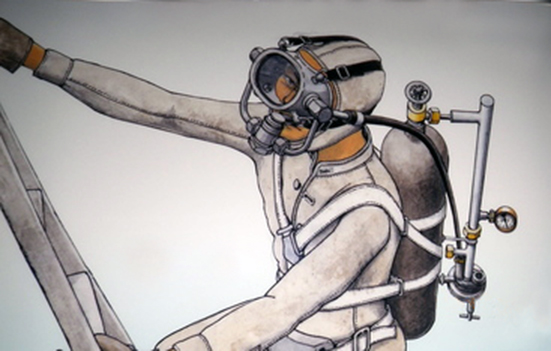
Image source: jsuga.exblog.jp
What’s in a name?
Out of the two primary inventors, Mr. Ōgushi’s name is something of a mystery.
He gave his surname to the Ohguchi Peerless Respirator device (the family name was then transcribed Ohgushi, with an h used to indicate a long o sound), but his personal name is less clear.
He is called Iwao Ōgushi 大串岩尾 in most recent Japanese sources, (other example here and a rather definitive here).
In older sources, however, another personal name is sometimes given, 大串金蔵.
This name is itself mostly transcribed with a rather uncommon reading as Kanezō Ōgushi in English language sources, especially in Nyle Monday’s influential research.
Yet if it was this indeed his personal name, Kinzō Ōgushi would be the most common and natural reading.
We’ll follow the most recent output by authoritative Japanese sources, and like them call the inventor Iwao Ōgushi 大串岩尾.
According to them, Mr. Iwao Ōgushi was still active and alive in the 1970s, and was interviewed by Marine Diving magazine, for an article published in the magazine’s issue 10 of July 1971.
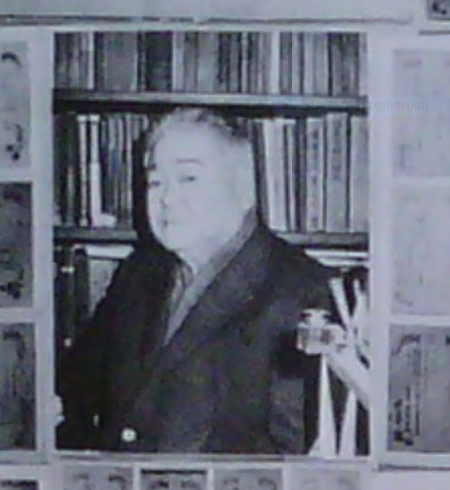
The Ohguchi Peerless Respirator breathing apparatus was patented in Japan (first version in 1918 then in 1920 / Taishō 9) and also abroad, and was later used/adapted in different places, notably by the Soviet navy, on a well-documented salvage mission.
It is interesting to note that another very similar design, but with a full face mask, the Yamamoto respirator or (Yamamoto-shiki sensui no tomo literally the Yamamoto-design diving-companion) was also patented at the same time in Japan. Although less well known than the Ohgushi design, it was actually more commonly used, supposedly because the demand valve mechanism, though similar, was more confortable than on the original Ohgushi design…
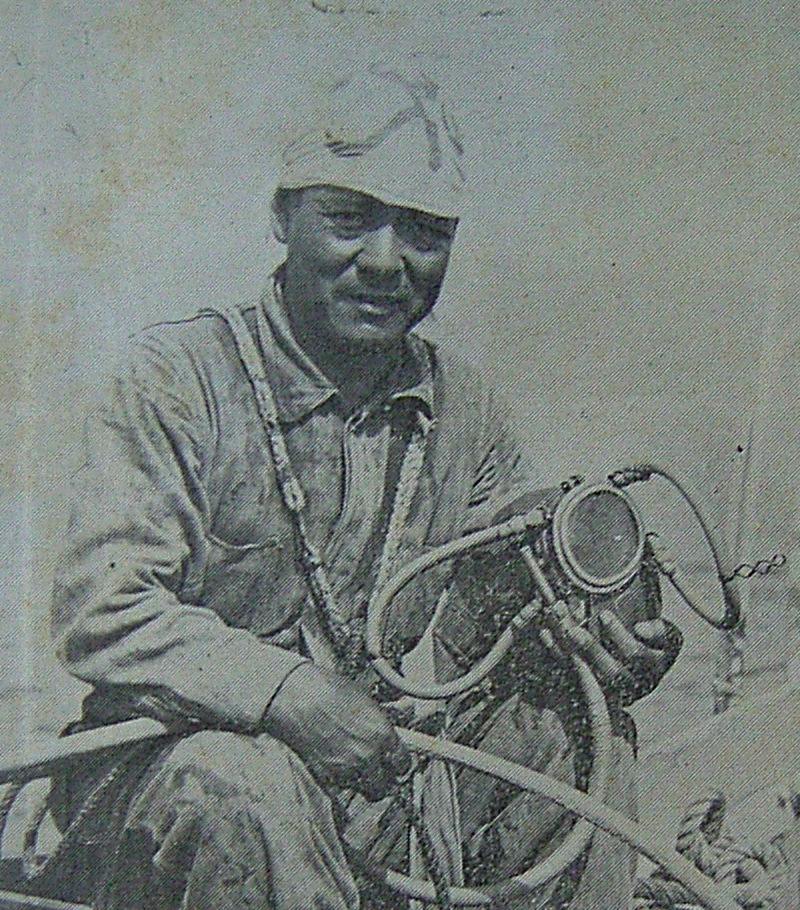
As it is often remarked, with a touch of national pride:
1918 is indeed almost 25 years before Jacques-Yves Cousteau and Emile Gagnan patented, in 1943, the famous Cousteau-Gagnan self-contained underwater breathing unit, which, presented in this way, does make the device seem quite revolutionary.
Alas…
Diving history is complex, as is the timeline of diving-related inventions, especially the period from the mid-19th century to the mid-20th century.
And contrary to what might have been written by some eager for Japan to take a leading position in the development of self-contained breathing devices, the patented Ohguchi Peerless Respirator, while certainly innovative and unique, is not the first pressure regulator-based breathing system, nor is it the first self-contained device.
The Japanese unit only one of multiple inovative inventions which predated the development of the Cousteau-Gagnan scuba model.
Focusing exclusively on the Cousteau-Gagnan design is to forget that it is itself to be placed in a continuity of successive inovations and inventions which began in the 19th century, along the following rough timeline:
[ Rouquayrol/Denayrouze unit > Maurice Fernez unit > Watanabe/Ōgushi/Kataoka “Ohgushi” unit > Fernez/Le Prieur unit > Le Prieur unit > Georges Commeinhes GC 43 > unit Cousteau/Gagnan CG 45 unit ]
This is list is schematical and highly reductive, as many other underwater breathing systems were conceived and experimented (including the Dräger units, other rebreathing devices and other less well-known devices such as the Cabirol, or the Desgrez and Balthazard for instance.. for instance), all in roughly the same timeframe.
Most of these devices derive from breathing apparatuses initially designed for use in a mining context, as development of modern mining techniques in the 19th century led to safety and environmental concerns (another famous example being the development of hyperbaric science, which started off as a studies of caisson illness…).
A good ressource on the subject is Vianney Massenet’s Ph.D thesis on the development of recreational scuba diving, which is accessible here, but published in French only…

That said, Watanabe/ Ōgushi’s Japanese scuba unit model is nonetheless particularly interesting in its design, which included true technical innovations.
It also stands out by its primary function and purpose, directly linked to the development of the pearl industry and its requirements for flexibility, and, as such, definitely deserves its place in world diving history.
Design and innovations of the Ohguchi Peerless Respirator
To describe the unit briefly, it is an underwater breathing device that could be used connected to a surface compressor (a patent machine, with 4 cylinder reciprocating hand pumps capable of offering 200 bar of pressure) or autonomously as a self-contained unit, with the diver wearing one or two back-mounted compressed air cylinders.
The standard cylinder was said to contain 1000 litres of air at 150 bar, making it a roughly 6.5 litre tank, and was fitted with a pressure gauge.
The Ohgushi unit went through different phases of development and patents.
In its most advanced design, the device was functioned through a manually activated demand valve system, controlled by the diver’s mouth (airflow valve opening being controlled by teeth pressure).
The system design implied that the diver had to breathe in through the nose, which was enclosed in a facemask fitted with an air inlet.
Airflow strength was proportionnal to the pressure applied (stronger teeth pressure = wider valve opening = stronger air flow), and the flow could be calibrated to the diver’s requirements by adjusting a T-shaped screw prior to diving.
The mask itself was other similar to a modern round diving mask, covering both the eyes and the nose.
After inhaling through the nose, the diver closed the air inlet by releasing teeth pressure and exhaled through the uncovered mouth.
However, more than the regulator design, which was still a “manual” system, albeit teeth-pressure controled, and far from the first, we believe the unit stands out by the use of modern-style, high-pressure compressed air diving cylinders.
Previous units that could be used self-contained, such as the Rouquayrole-Denayrouze used a back-mounted horizontal steel cylinder, but the pressure was not very high, allowing for a much shorter autonomy.
Compressed air had been around for a while, yet compressed air cylinders were relatively new.
We do not know the source of the Ohgushi or Yamamoto device’s air cylinders. Roughly at the same time, when Yves Le Prieur created also a device using high-pressure air cylinders, he used Michelin air cylinders designed to fix automobile tyres…

Image source: The_Journal_of_Diving_History_86_2016
This combination of a half-face mask and a mouth-controlled demand valve (which freed the hands of the diver), is quite unique.
Going into more details, the Ohguchi Peerless Respirator had an oval mask made of rubber with a clamped face glass, covering the eyes and the nose, similar to early round diving masks.
It had a hooked harness acting as a mask strap at the back of the head.
A standard poppet valve was connected to the outside structure of the mask, aligned with the diver’s exposed mouth.
Air flowed from the air source used, either the surface pump or the back-mounted cylinder(s), into the valve’s inlet.
The valve’s outlet was connected to an external tube, itself connected to an inlet on the side of the face-mask.
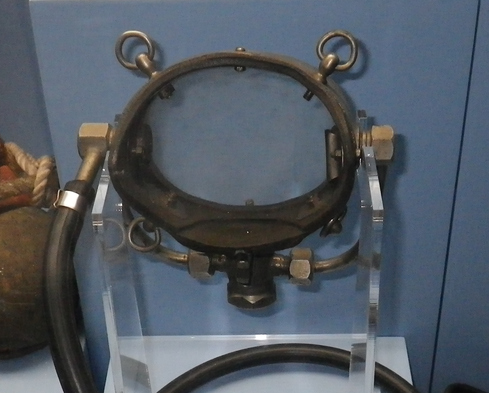
Image source: jsuga.exblog.jp
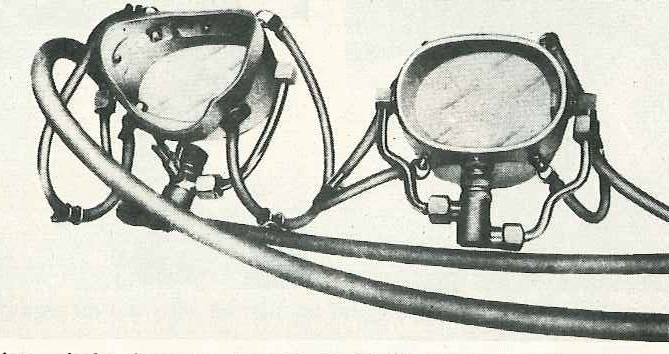
Image source: divingfan.net/kind-of-diving
On the rear of the demand valve, 2 levers are held between the teeth of the diver, one is fixed and the other one mobile.
To open the valve and get air, the diver needed to clench his teeth, which opened the valve and let air flow to the mask’s air inlet.
The diver would then inhale the air through the nose.
To exhale, the diver unclenched his teeth, which shut the valve, and then exhaled through the mouth.
Image source: www.divescrap.com
To summarise, the “Ohgushi’s Peerless Respirator” could be used an autonomous (self-contained) or surface-connected device, and supplied air to the diver through a demand valve regulator, activated by mouth movement (teeth pressure on levers), which effectively freed the hands for underwater work.
This level of autonomy might seem completely ground-breaking in 1918, but only if we ignore other technological advances of the 19th to early 20th century, to only focus on the Cousteau-Gagnan membrane-based demand regulator.
The Ohgushi’s Peerless Respirator actually fits in a continuum of similar devices, which were already known in Japan and probably influenced its conception, and stands out mainly by the originality its teeth-pressure based demand mechanism and eye and nose covering facemask.
A detailed article on the Ohgushi device can be downloaded here
Image sources: The_Journal_of_Diving_History_86_2016 / www.divescrap.com / jsuga.exblog.jp
Background and history
Riichi Watanabe came from from the Ōmura clan in Kyūshū, coming of age at a time when the feudal system was being dismantled.
He had studied, and graduated from the newly established Tōkyō Fisheries Institute, and setup a pearl culture company in Nagasaki.
Following Japanese innovations in pearl aquaculture, Riichi Watanabe became a well established pearl merchant, at a time when hard-hat diving equipment was starting to be used as a modern and efficient alternative to ama-style breath-hold diving.
And yet, for practical reasons, he wanted divers to have more flexibility than what the hard-hat diving kits offered – the kit was cumbersome for use in the shallow waters required by pearl aquaculture, it took time and personnel to setup, then support an individual diver, and imported models were generally quite large for Japanese divers of the time, which did not help much.
Most likely inspired by the short autonomy offered by the Rouquayrol and Denayrouze apparatus of the Imperial Navy, and perhaps by knowledge of the Fernez devices which had been presented in industrial fairs at the same time, Riichi joined forces with machinist friend, Iwao Ōgushi, and worked on a device together in Tōkyō.
By 1916, they had designed a functional diving apparatus.
The pair, who were not divers themselves, enlisted the help of a professional diver, captain Yumihachi Kataoka (Nyle Monday calls him Kyūhachi Kataoka, but we’ll go with the Japanese wikipedia entry on this one), to help refine the device.
It is thanks to his input that they developed the third type of valve installed on the apparatus, a mouth/teeth-controlled demand valve that effectively freed the divers hands.
Yumihachi Kataoka tested the device in Japan, diving to 60 metres in the murky waters of the busy Yokosuka Harbour, then in the southern-pacifc islands mandated to the Empire Japan under the South Seas Mandate for a 6-month long test run, no doubt connected to Riichi’s pearl business, as some of the islands played a important role in the budding pearl industry.
Some of Kataoka’s experimental diving / pearl prospection also took place in the Arafura Sea, which had been rumoured to be an interesting location for pearls, which shows how closely connected to the pear industry this device was.
As a side-note, Kataoka personally knew Yamamoto, inventor of the Yamamoto-shiki respirator, which, means there must have been some sort of direct influence between these two very similar and contemporary devices.
Kataoka also founded Tokyo Submarine Industrial Company Inc. in 1918, which manufactured the Ohguchi Peerless Respirator device in Japan and abroad.
Patents on this new underwater breathing apparatus were taken out in Japan in 1918, in Great Britain (no. 131,390), the United States (no. 1,331,601), France (no. 496,716) and Italy.
However, the unit and derived models did not meet a great commercial success, despite use in salvage missions (including that of the Black Prince), and a late adoption by a cash-strapped Soviet navy (in 1926, Kataoka’s company signed a contract with a Soviet agency called EPRON, short for “Expedition for Underwater Works of Special Purpose in the Black Sea” , licensing the apparatus)

Image sources: The_Journal_of_Diving_History_86_2016
A continuum of inventions
As innovative as it was, the Ohguchi Peerless Respirator is to be placed in a continuum of underwater breathing apparatuses, some with self-contained air supply and surface fed, which are all somewhat connected to the later development of Cousteau-Gagnan unit.
We won’t list them all, but focus on some major inventions featuring similar innovations.
The first of these devices is the previously mentioned Rouquayrol and Denayrouze device, models of which had actually been imported to Japan and used by the Japanese Imperial Navy on its warships.

Image source: www.rouillac.com
The appareil plongeur Rouquayrol-Denayrouze (Rouquayrol-Denayrouze diving apparatus) was one of the first major steps towards self-contained underwater autonomy.
The Rouquayrol and Denayrouze was developed as an underwater breathing device, based on Benoit Rouqayrol’s patent pressure regulator used for work in mines/gas environments, and itself based on previous developments.
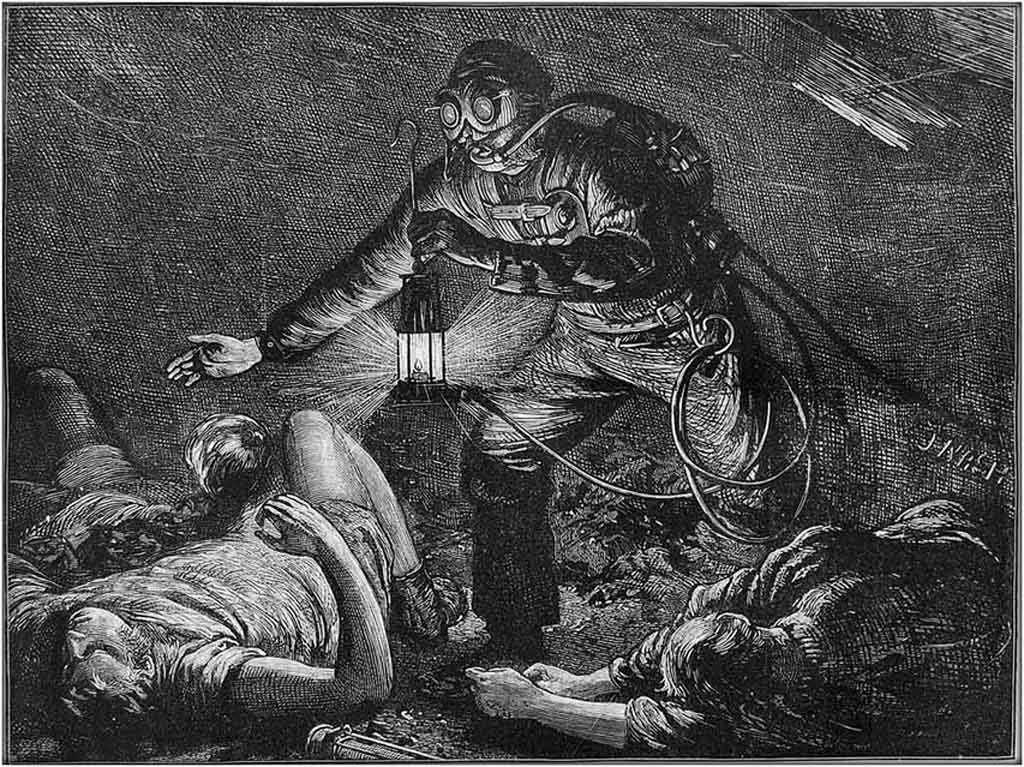
Image source: baguenaudes.net/tag/denayrouze/
It was patented in 1865, and gained the support by the French navy.
First international patents were taken out in 1872, and the device was a commercial success worldwide, especially with military navies, due to the flexibility it offered.
As a key point, the device functionned through a membrane-based demand regulator, which itself was based on an earlier patent by Dr. Guillaumet – as we can see, the Ohgushi design was far from being the first demand regulator…
The Rouquayrol membrane-based demand regulator design was a hand-free design, where airflow was activated by inhalation, and it is basically what gave birth (through E. Gagnan’s minaturised format) to what scuba divers still used today…
Image source: baguenaudes.net/tag/denayrouze/
Pressure in the R2 compartment is equal to ambient + lung pressure.
The membrane is flat and the valve is closed, blocking the flow of compressed air from the R1 tank
Image source: divingfan.net/diving-history
Image source: www.divescrap.comouquayrol_-_Denayrouze.html
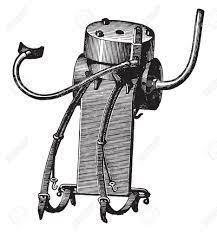
The two inventors also designed a soft diving face-mask, described in 1877 patents, which was made out of rubber and with a face glass, and highly similar to the later Japanese invention.
Yet the mask was not popular with divers, and was soon replaced by a half-helmet (the “pig snout”), which was deemed more comfortable and convenient, and became the standard for the device.
The apparatus could also be connected to full helmets, or used with a mouthpiece, diving goggles and a nose-clip for short dives.
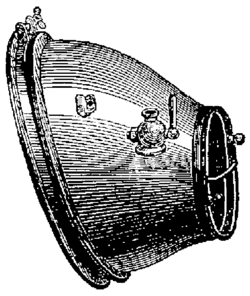
Image source: fr.wikisource.org

Image source: baguenaudes.net/tag/denayrouze/
The Rouquayrol-Denayrouze diving apparatus was a regulator-based unit, in which surface air was pumped into a barrel-shaped steel reservoir of compressed air, mounted on the diver’s shoulders.
The regulator device was declined in multiple versions, depending on the type of configuration used (goggles, mouthpiece and nose clip, mask, half-mask, full-face mask and hard-hat – the lighter versions (with a mouthpiece and nose-clip) were used for shorter work session, usually with less than 30 minutes underwater.
Benoit Rouquayrol’s patented pressure-regulator, was connected to the diver’s tank. On inhalation, the valve would open, send compressed air to the half-mask / helmet, or to a demand hose placed in the diver’s mouth in the mask/goggles version.
One of the most interesting features of the Rouquayrol-Denayrouze is a demand mechanism which drew in a rubber diaphragm on top of the air chamber, and opening the valve, and allowing airflow. In the lightest version, the diver had a rubber mouthpiece in the mouth, through which he inhaled and exhaled…
This device not only freed the hands of the divers like the Ohgushi’s Peerless Respirator, but the membrane-based mechanisms prefigures the membrane-based demand-valve mechanism of the Cousteau-Gagnan unit.
This mid-19th device is not-only a hand-free regulator, but is actually activated by the depressurisation caused by the diver’s inhalation, just like a modern scuba regulator!
In fact, what Emile Gagnan consciously did was simply to create a miniature version of the Rouquayrol’s membrane regulator…
The Rouquayrol-Denayrouze Diving Apparatus in use underwater
Source: baguenaudes.net/tag/denayrouze/
And the unit could also be used as a self-contained breathing apparatus.
While the device was mainly conceived as a surface-supplied device, like the Ohgushi’s Peerless Respirator, it could be either connected to the surface or used autonomously with through back-/shoulder mounted compressed air tank.
However, when used autonomously, i.e. not connected to a surface air source, the diver’s tank held 1400 litres of weakly compressed air (roughly 30 bar), which allowed divers roughly 30 minutes of autonomy, walking on the bottom at no more than ten meters depth.
And yet still, this was a major first step toward lighter, untethered diving. And more importantly, it used a membrane regulator, where the demand valve was activated by the diver’s inhalation, exactly like present day regulators…
When connected to the surface, the shoulder-mounted tank doubled as a security bailout tank.
Good sources of information on the design of the Rouquayrol-Denayrouze membrane regulator include divescrap.com, divinghelmet.nl and especially, in French baguenaudes.net
Image source: baguenaudes.net/tag/denayrouze/
The Rouquayrol and Denayrouze device was a success, used in mining and then underwater across the world including, amongst many other navies, by the Japanese Imperial navy.
It also had some success for commercial use by sponge, amber and also pearl divers, as an alternative to breath-hold diving, yet more mobile than standard hard-hat kits.
In fiction, the Rouquayrol and Denayrouze device was described (and named) in use by Captain Nemo and the Nautilus crew for their underwater outings, in Jules Vernes’ “20,00 Leagues Under The Sea”, which was published in 1872, a few years after Vernes had seen a demonstration of unit that had left a strong impression…
Image source: fr.wikisource.org
It would be too long to detail, but let’s keep in mind that there were also other self-contained apparatuses at the time, such as the Cabirol, or the Desgrez and Balthazard for instance…
Another mother major development, a fully contemporary to the Ohgushi’s Peerless Respirator was the breathing apparatus invented by Maurice Fernez, which also played a pivotal role in the transition of diving from surface-tethered diving helmets to self-contained equipment.
All the devices Fernez invented himself were surface-supplied, but his inventions, especially his mouthpiece equipped with a one-way valve, made a difference, as did his collaboration with commandant Yves le Prieur to develop a self-contained underwater breathing apparatus.
In 1912, Fernez dived his first device, the Fernez “skin-diver apparatus”.
The light but surface-supplied device used Fernez designed goggles and a nose clip at shallow depths, along with a Fernez mouthpiece with a one-way valve.
The design was later perfected, but remained a surface-supplied, continuous flow unit.
In 1925, Maurice Fernez began collaborating with Yves Le Prieur, who had been very impressed Fernez’s demonstrations of later units.
They started building a self-contained, fully autonomous system, inspired by the short and shallow autonomous the Rouquayrol and Denayrouze apparatus permitted.
The self-contained device was completed in 1926, with a back-mounted cylinder (based on Michelin compressed air cylinder for repairing punctured tyres).
The cylinder was a 3-litre tank filled at a pressure of 150 bar (so offering the diver roughly 450 litres of air, compared to the 6.5 litre tank at 150 bar, offering roughly 1000 litres), with a regulator supplying a hand-controlled continuous flow of air to a Fernez one-way valve mouthpiece.
In 1931, the Fernez goggles were replaced by small rubber mask with two glass lenses, allowing the diver to reach deeper depths safely.
Le Prieur finally ended the collaboration, dropping all the Fernez features in 1933 and replacing them with a new full-face mask design. The device was patented under the name appareil Le Prieur (“Le Prieur apparatus”).
The Le Prieur apparatus was a constant flow, hand-controlled device, which severely limited diving autonomy as it was much more wasteful than a demand valve system.

Interestingly enough, Le Prieur spoke Japanese and had translated a judo manual from Japanese to French, for instance.
He had been stationed in Japan between 1908 and 1910 as military attaché and translator at the French embassy in Tōkyō, and even taken part, with Japanese military officers, in the first glider flights on Japanese soil in 1909…
Yet this is 6 years before the Ohguchi Peerless Respirator was designed, and there is no evidence to link the two inventions, other than through previous models.
Beyond technical aspects, Le Prieur’s greatest contribution is probably the invention recreational diving.
Diving was, until then, work-focused, collecting seafood, pearl culture, repairing, salvaging were the primary reasons to go underwater.
And yet, on August 1 1935, Jean Painlevé and Yves Le Prieur created the first-ever official structure regrouping self-contained (fun!) divers, the Saint-Raphaël Club des Sous-l’Eau (Saint-Raphaël Underwater Club), and also pioneering the use of diving fins.
This recreational approach, along with breath-hold spearfishing clubs and activities, greatly influenced later practices of J.Y. Cousteau and friends.
1930s French magazine special on “underwater tourism”, family with Le Prieur devices

Image source: 35410006.weebly.com/cousteaus-inspirations.html
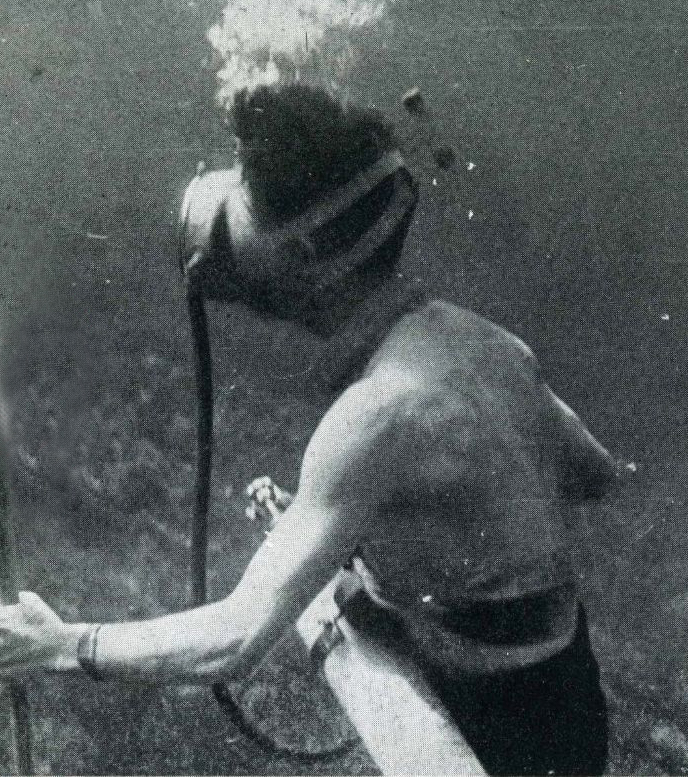
Louis Marie de Corlieu 1914 fin prototypes, used by Le Prieur
Image source: museedumas.fr
Image source: www.sdhf.se/history-of-diving-part-6/
As we can see from this little walk through autonomous diving history, what J.Y. Cousteau and Emile Gagnan actually did was to expand on the membrane-based demand valve of the Rouquayrol-Denayrouze model, while combining it to a Le Prieur inspired set-up.
This came from Gagnan’s patent minaturisation of the Rouquayrol-Denayrouze into a bakelite case, designed for use with gas-powered cars, which were common during the fuel shortage caused by the German occupation of France.
But had they really been the first to do so?
In 1935, Georges Commeinhes patented a device for a breathing apparatus for firefighting personel.
He basically combined a Rouquayrol a Denayrouse membrane regulator and Le Prieur’s compressed air tank
In 1937, he adapted the device for amphibious use, and the device which was approved by the French Navy.
And in 1942, Georges Commeinhes finally patented a device intended for breathing underwater, under pressure, which he called the GC42 (not to be confused with the Cousteau-Gagnam CG-45…)
Two 4 or 5 litre tanks were placed in a streamlined back-pack, connected to a membrane regulator, with a pressure gauge and a sound alarm for low-pressure.
Sound familiar?
Commeinhes dived the device to a depth of 53 m in Marseilles, on July 30 1943 – but died during the liberation of Strasbourg, in 1944.
His invention was soon forgotten, swept away by Émile Gagnan and Jacques-Yves Cousteau’s almost simultaneous invention.
And the rest is history…
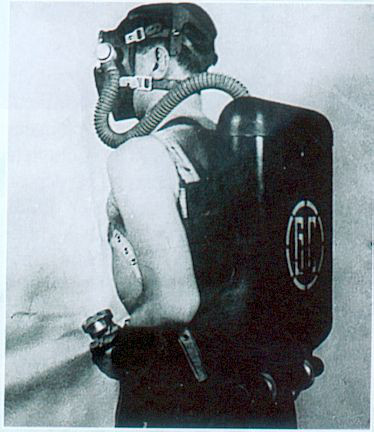
Image source: en.spiro-vintage.com/histoire-scuba
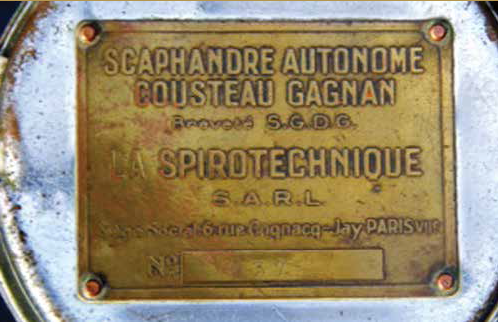
Image source: The_Journal_of_Diving_History_86_2016

Image source: en.spiro-vintage.com/histoire-scuba

Image source: museedumas.fr/pages/plongee_vintage_luca_dibiza/
As we can see, the Japanese model was indeed quite innovative, in that it combined a mouth-activated demand valve with a tank based, autonomous and self-contained setup that would appear roughly 10 years later with the Fernez-Le Prieur unit.
The mask design is also interesting, though probably inspired by the less well-known Rouquayrol-Denayrouze rubber mask.
Another interesting aspect is the idea to use cylinders for high-pressure gas, which overcame the limitations of the Rouquayrol-Denayrouze in terms of underwater autonomy.
This happened roughly at the same time in Japan and in France probably linked to innovations in the the design of steel cylinders, allowing them to withstand higher working-pressures.
Le Prieur’s tank were designed for automobile use, basically to fix Michelin car tyres.
It would be interesting to know where the design of the (6.5L?) compressed air tanks used in the Japan for the Ohgushi device originally came from.
One can also wonder why the Ohguchi Peerless Respirator, after some initial commercial success, did not gain more public attention.
There are reasons to think this might have had something to do with the mouth/teeth pressure activated demand mechanism – especially since membrane-based demand regulators had existed for over 50 years, and no doubt provide a much more comfortable and natural breathing experience than synchronised teeth clenching/unclenching.
One thing is clear, French technical achievements, and the development of J.Y. Cousteau and Emile-Gagnan’s company, La Spirotechnique, to distribute their products, soon wiped out the competition for early scuba systems, and, expanding on LePrieur’s approach to fun-diving, single-handedly created the recreational market.
It’s important to remember that La Spirotechnique was far from a small operation.
It was actually a branch powerful French gas conglomerate Air Liquide (Emile Gagnan was an Air Liquide engineer) and its creation was soon followed by the establishment, in 1957, of La Spirotechnique’s USA branch U.S. Divers, which sold French made equipment before developing its own range of products.
Watanabe, Ōgushi and Kataoka’s technological achievements were soon forgotten in the wake of the Second World War, models based on their device surviving only in specific contexts such as the Soviet navy.
Meanwhile, Cousteau’s La Spirotechnique established itself in Japan as early as 1970, selling recreational scuba diving equipment under the name Nihon Aqualung…

La Spirotechnique scuba model for kids / boat repairs




